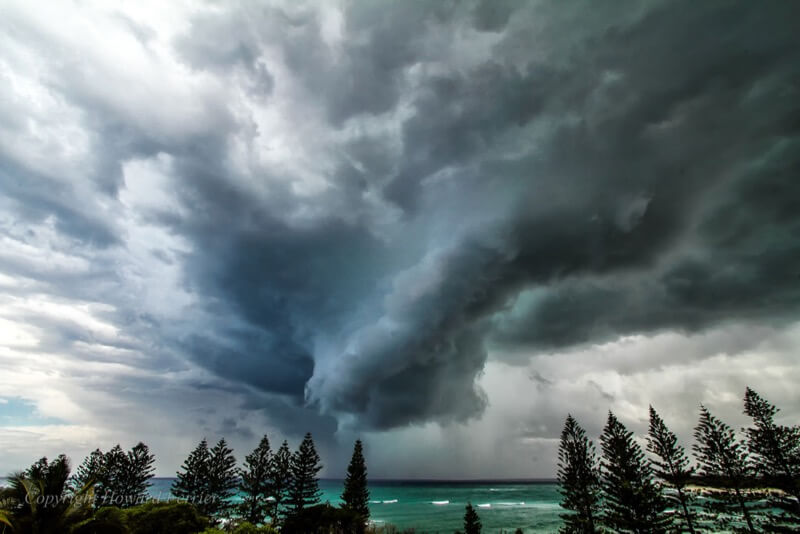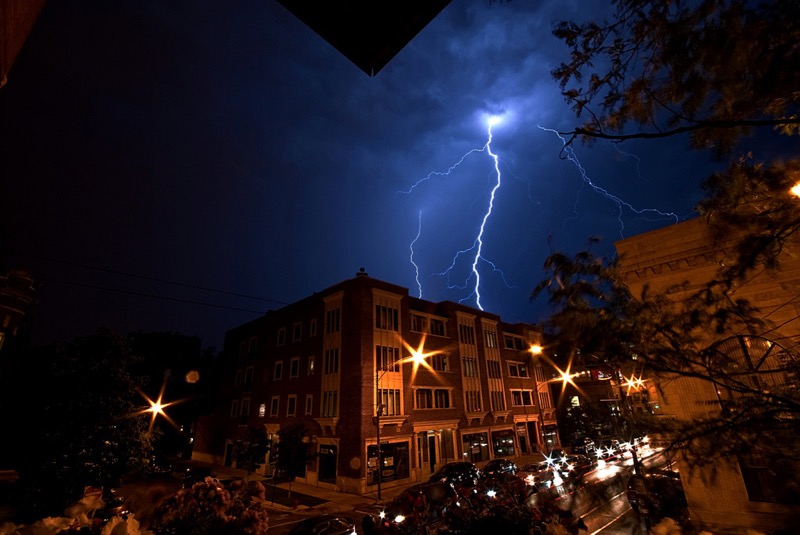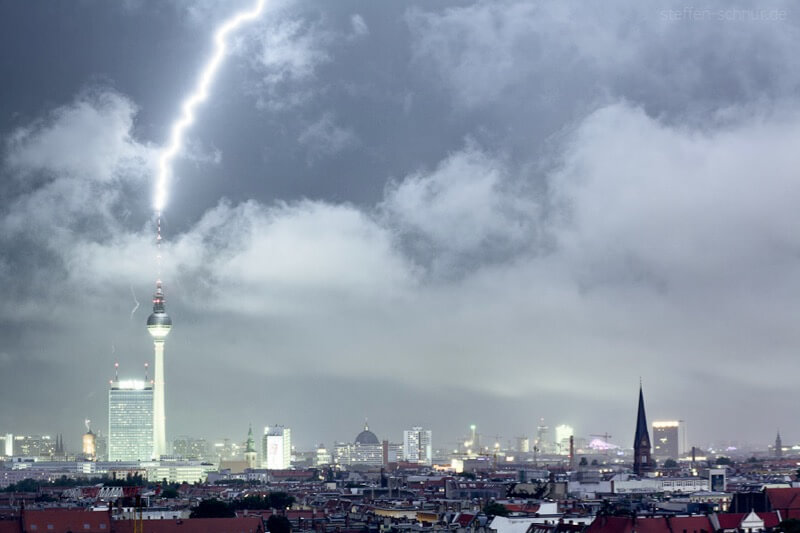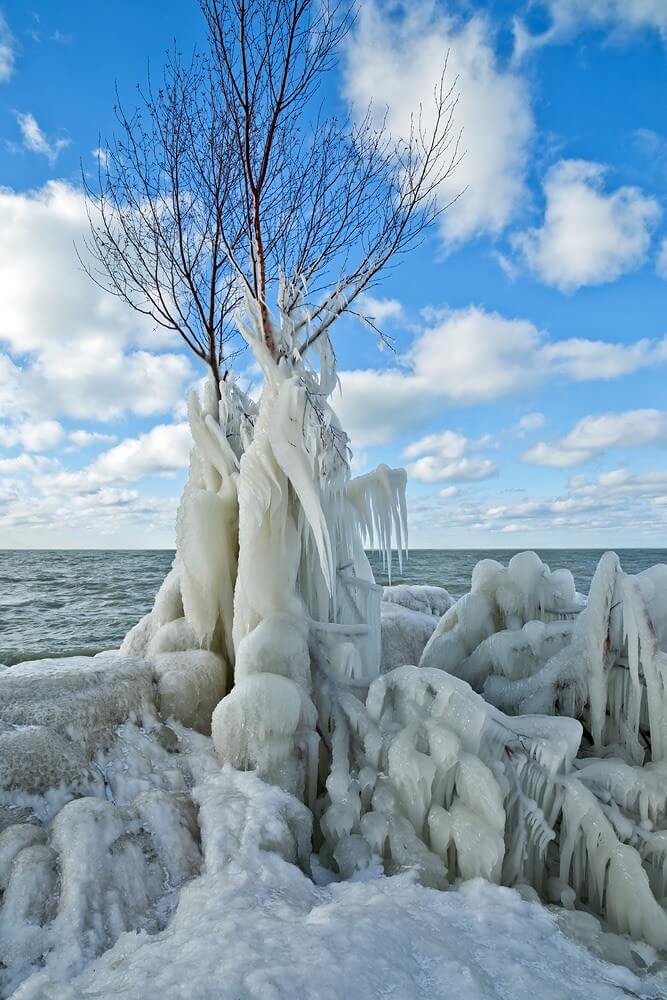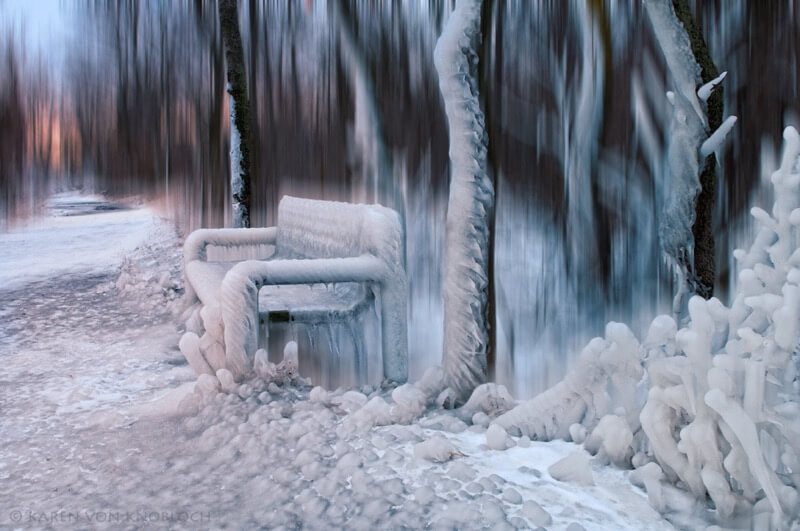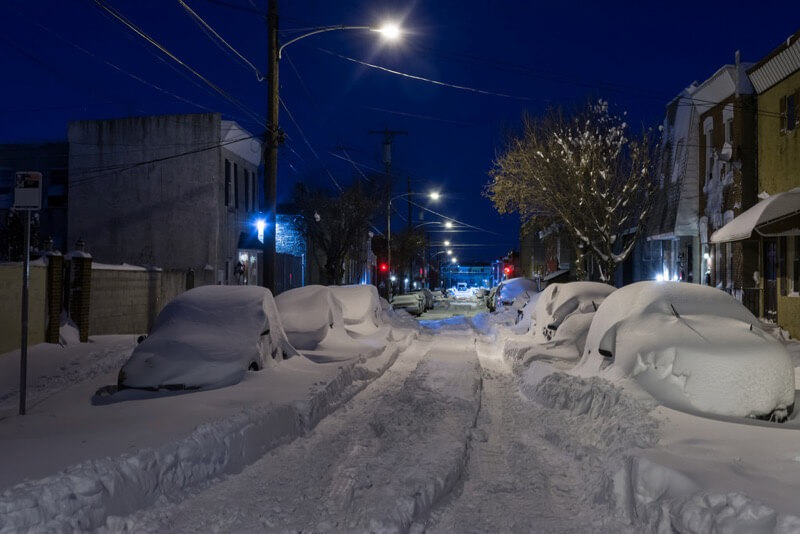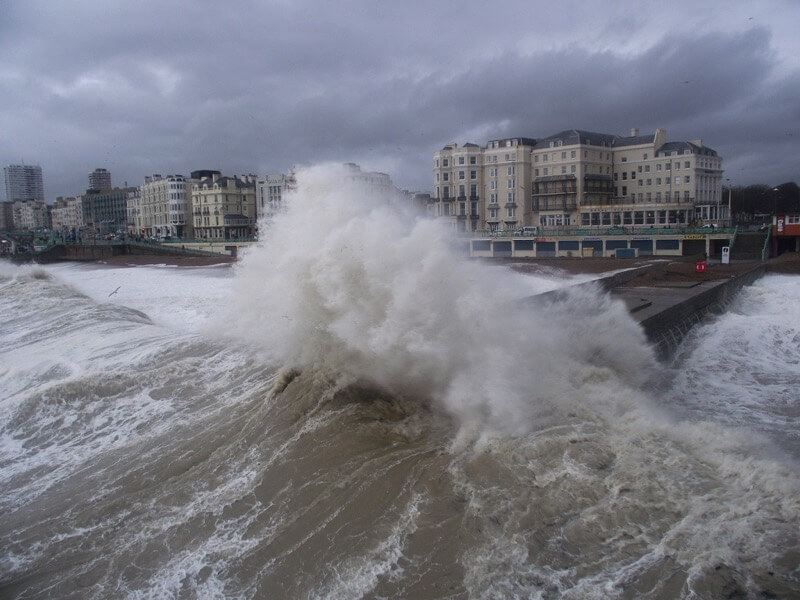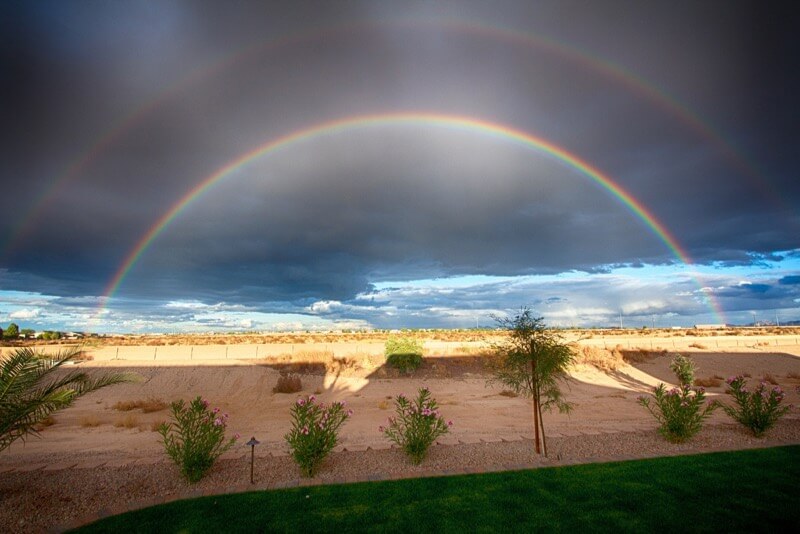Extreme weather is often destructive, but it can also be breathtakingly beautiful. This monstrous beauty is powerful enough to draw people–and especially photographers–out of their homes and into the storm. Instead of cozying up inside, they endure strong winds, heavy rain, and dangerous conditions just to get an incredible shot.
Big storms and other extreme weather can be an unforgettable experience and opportunity. You can shoot awe-inspiring photos of giant thunderclouds, fierce ocean waves, and flashes of lightning. It’s an experience you can’t put off until tomorrow, either, since the storm will already be gone by then.
Ben Roffelsen Photography – A Sound of Thunder

Photographing a storm can be thrilling, but also dangerous. In terms of danger, it’s up there with photographing lions and other fast predators. If you want to get awesome photos of a storm, you first need to respect its lethal power and prepare yourself accordingly. Here are a few precautions you can take while shooting a storm.
Stay home if you’re tired.
To safely face a storm, you need to have a lot of energy. In other words, if you’ve had a bad night of sleep or aren’t feeling well, you should probably stay home. Fatigue will put you at risk, as well as lower the quality of your photos.
Similarly, if you get tired while you’re out, go home. A storm can be exhausting even when you’re feeling energetic. You can head out with adrenaline and enthusiasm, only to crash into bed a few hours later when you come home. Heavy rain/hail, strong wind, and constant concentration can really sap your energy. Make sure you don’t push yourself to exhaustion.
If you have trouble knowing when to stop, give yourself a time limit. Depending on the conditions, an hour might already be enough.
Wear storm-appropriate clothes.
This one should be common sense, but it’s nevertheless easy to forget. You think, “Oh, these regular shoes should be fine…” And then later, you’re out in the pouring rain (or snow) with wet feet, feeling uncomfortable.
This discomfort isn’t just unpleasant–it can also be dangerous. Getting wet and cold can slow your reactions and dull your thinking. At the very least, it can distract you from giving the storm your full attention.
Waterproof clothes and boots are absolutely necessary when you’re shooting a storm. Depending on the situation, you might also want to bring along a helmet to protect your head from hail or flying rocks.
Your camera will need protective gear, too. A rain cover, like this one from Altura Photo, is essential. Alternatively, if you’re low on cash, you can use a plastic bag and rubber band to make a rain cover yourself.
Have an escape plan.
Storms are unpredictable. They can move faster than you expect, and they can strike suddenly in places that seemed calm. For this reason, it’s crucial to have an escape plan ready whenever you stop for photos. This escape could be as simple as keeping your car close by–as long as the road isn’t crowded with other cars and storm chasers. An empty, four-way intersection is ideal.
If you don’t have a car along, stay close to a shelter at all times. Trees don’t count. If the hail is big enough, or if lightning hits the tree, you’d be in trouble. A building of some kind, or a storm cellar for tornadoes, is a better bet.
Shoot from a distance.
Shooting from a distance is smart for safety as well as photography. Besides avoiding the worst of the wind/hail/etc., you’ll be more likely to capture the epic proportions of the storm. You’ll be able to see its massive size and watch it move across the landscape.
Staying far away will also reduce your chance of getting hit by lightning. This is especially important if you’re shooting on a hill or in a wide open space, like a field. These places typically offer the best vantage points, but it’d be risky/stupid to use them as shooting locations when the storm is getting close.
If you find a fantastic vantage point, but it’s too close to the storm, simply wait until the storm has passed. A storm can look just as epic from behind as from the front.
Go with an experienced storm chaser or trained meteorologist.
The best way to be safe (besides staying home) is to go on a storm photography tour, led by an expert with years of experience. A knowledgeable guide will prevent you from being in the wrong place at the wrong time. Going on a tour will also allow you to focus on taking pictures while your guide focuses on safety.
In any case, always go out with someone. Never go out alone. Storms are simply too violent to handle on your own. Even if they seem benign, they can turn vicious in a matter of minutes.
For more safety tips, check out this excellent article by Charles A. Doswell: “Storm Chasing with Safety, Courtesy, and Responsibility.”
No storm is the same. Still, you can plan and prepare for certain conditions and subjects, depending on the weather. Here are a few subjects you might encounter in extreme weather:
Storm Clouds
Clouds are the most obvious subject for storms. They’re easy to shoot from a distance, and they look stunning in photos.
When shooting clouds, you’ll get especially good results with a wide-angle lens. Zooming in can give you interesting shots, too, but a wide-angle lens will allow you to capture the storm’s full grandeur.
As you compose your shot, try to include something in the foreground to give your audience a sense of scale. A house, a field of flowers, or a line of trees could all work. Without these additional elements, your photo could lack proportion and end up looking bland.
Richard Watkins LRPS – Dungeness Storm

Wilson Silva – Threatening Storm Over the Dune

Harvey Smith – The English Lake District – Our thoughts are with you!

Ben Roffelsen Photography – Incoming
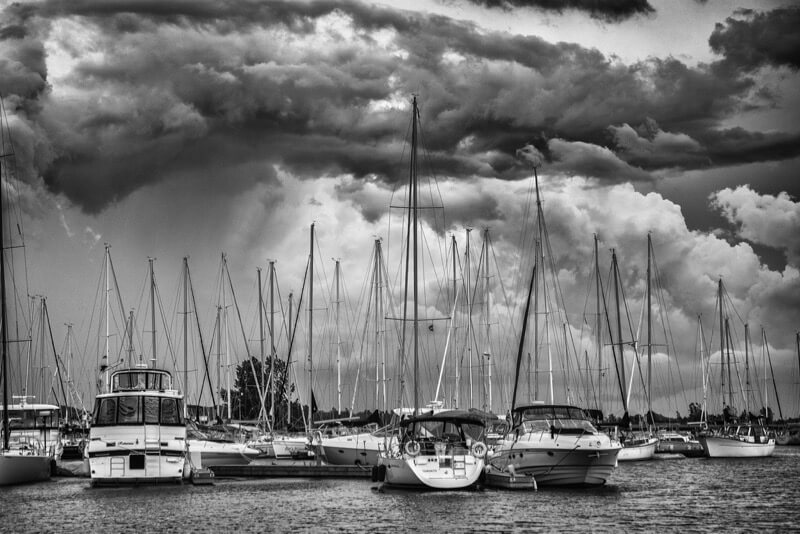
Nimit Nigam – Storm Over Himalayan Range
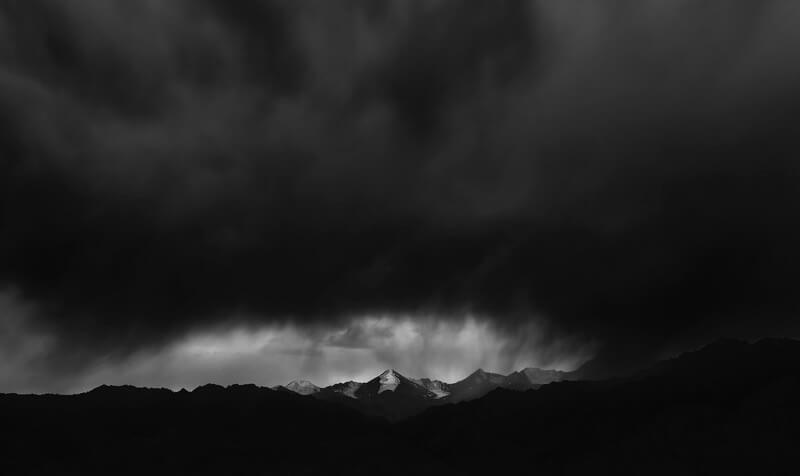
Fotis Mavroudakis – Sunflower field under a stormy sky
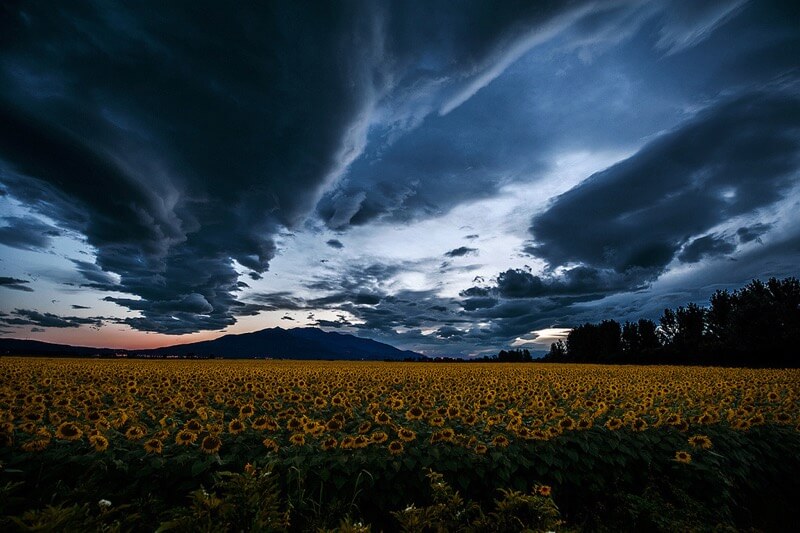
Sherri Yezbick-Taylor – Storm front approaching like the hand of God!!
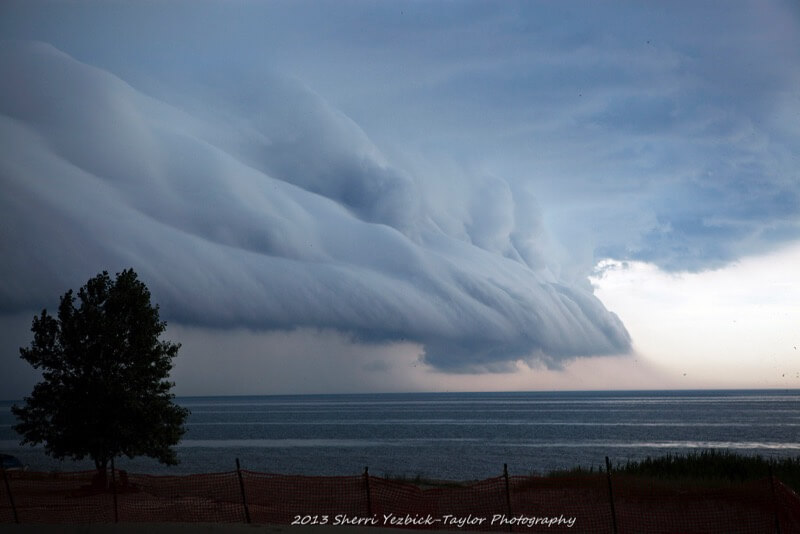
Scott Ackerman – Sunflower and the Storm
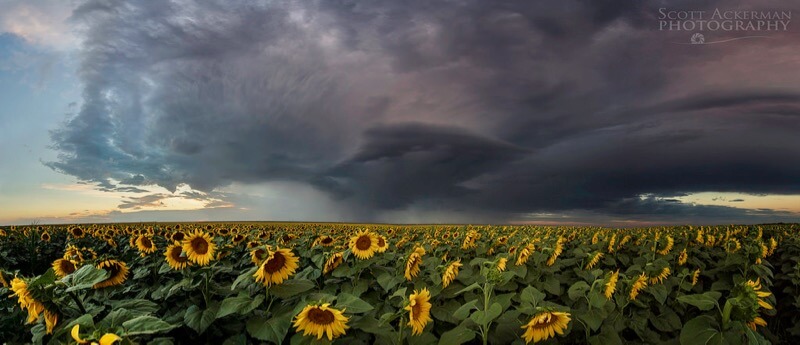
Tornadoes
Shooting a tornado is a goal that shouldn’t be taken lightly. As storm photographer Roger Hill once told National Geographic, “Think of the photographer looking to document grizzlies. You can approach and take a picture. But if you make a wrong move you can get killed.”
Tornadoes occur in a rare and dangerous type of storm called a supercell. In a supercell, the storm condenses into a single, vertical updraft, rather than splitting into several thunderstorms. In about 1-2% of supercell storms, this vertical updraft creates a tornado.
A supercell is definitely a situation that requires expert help. You’re facing a volatile storm that can create a tornado at any moment. Although relatively rare, the risk is still high enough to take extreme precaution.
Dick McGowan – Katie – Wynnewood OK tornado
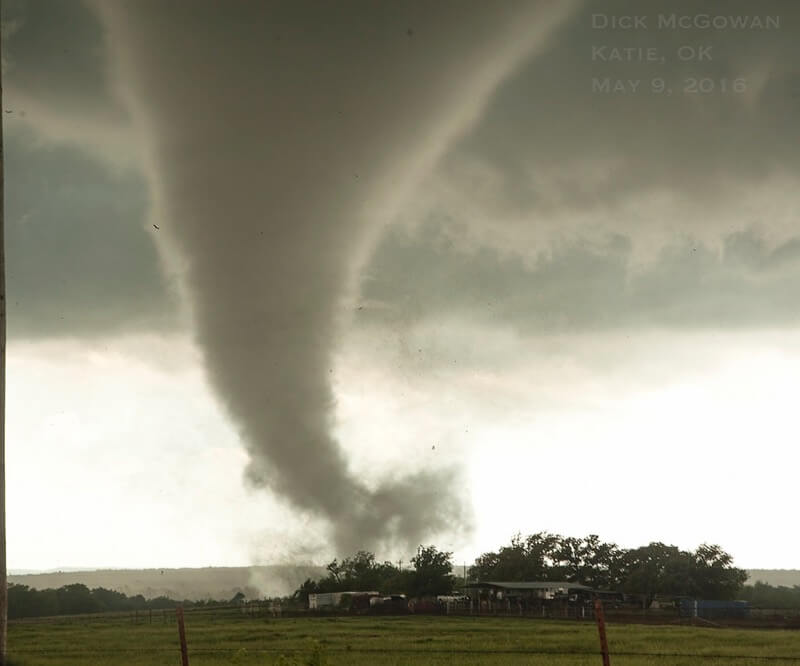
Dick McGowan – Colorado Supercell

Dick McGowan – Katie, OK EF-4 Tornado

Dick McGowan – Pilger tornadoes
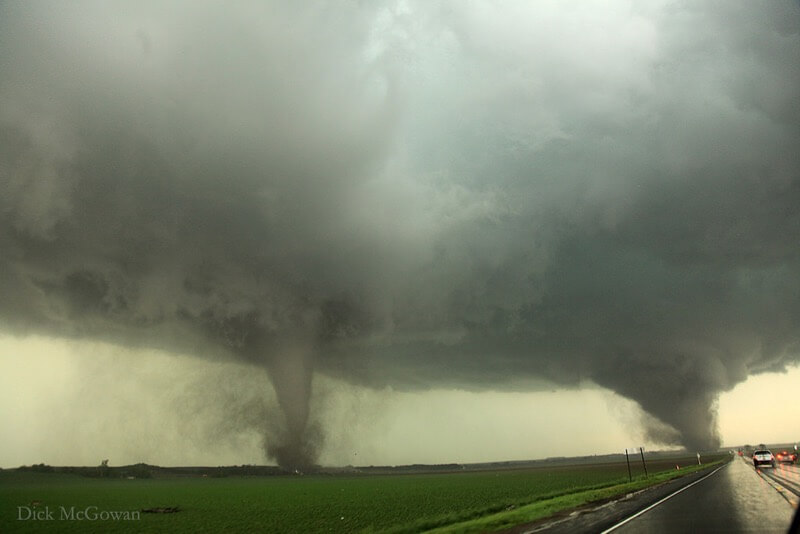
Lightning
Lightening is a fantastic but dangerous subject. It’s one of the many reasons you should stay at a distance when shooting a storm. A single strike can kill or severely injure you. Fortunately, you can avoid this risk by taking a few simple precautions.
First, shoot with a sturdy tripod that’s made of carbon fiber rather than metal or aluminum, which attract lightning. You’ll want to use a tripod anyway since it’s near impossible to get a good shot of lightning without one.
Second, stay away from trees and other tall structures that are likely to get hit by lightning. If you’re too close, the lightning could bounce off and hit you, too.
Finally, sit in your car and use a cable release to trigger the shot. Then, if lightning does strike, the car’s frame will protect you. If you’re worried the tripod will fall over in the wind, try hanging a heavy bag from the tripod’s base to stabilize it.
If that doesn’t work, you’ll need to drive farther away (as far away as possible) to safely shoot with a hand on the tripod. If the lightning is within 4 miles of you or thereabouts, it’s time to leave. Hopefully by then, you’ll have already snagged a phenomenal photo of lightning.
Benjamin Chase – Two for the Price of One
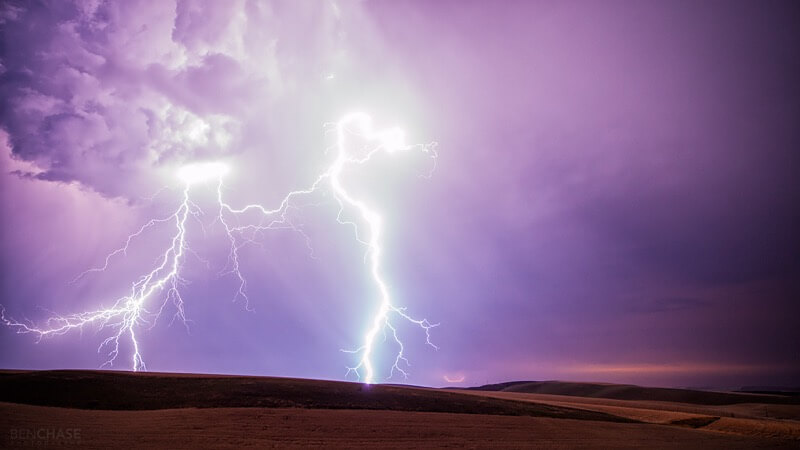
Benjamin Chase – Palouse Lightning
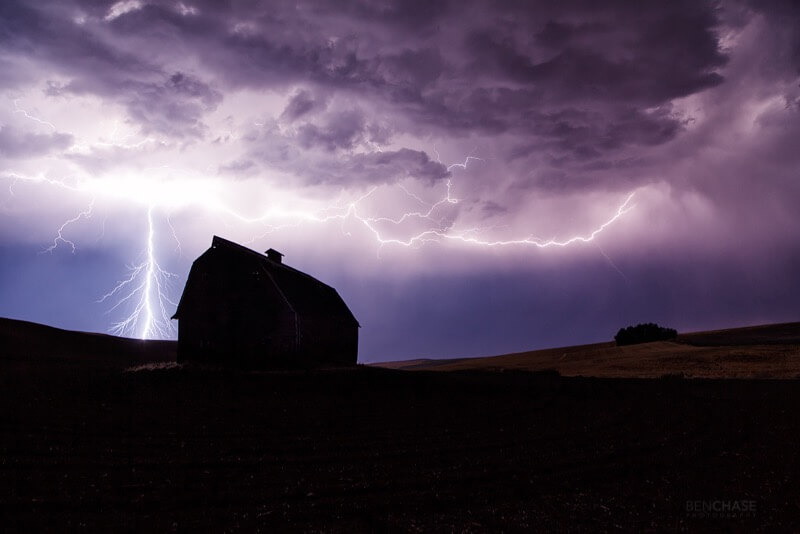
TroyMarcyPhotography – Rumble on the Plains
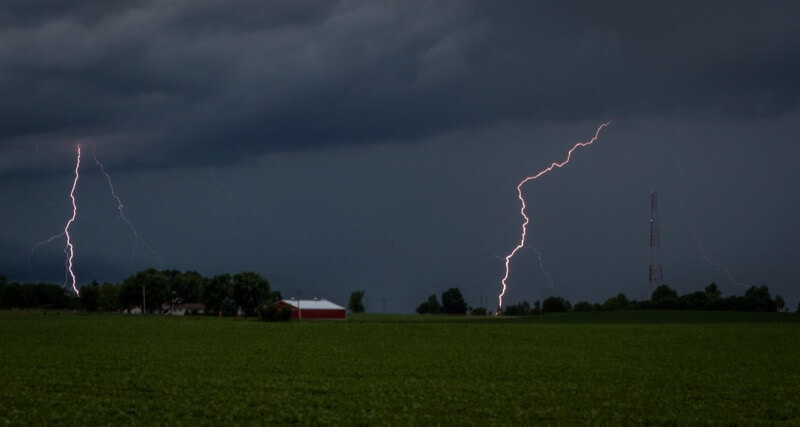
TroyMarcyPhotography – The Painted Skies of a Storm

Eric Hines – Indiana Lightning Storm

Fotis Mavroudakis – Thunderstorm Panorama
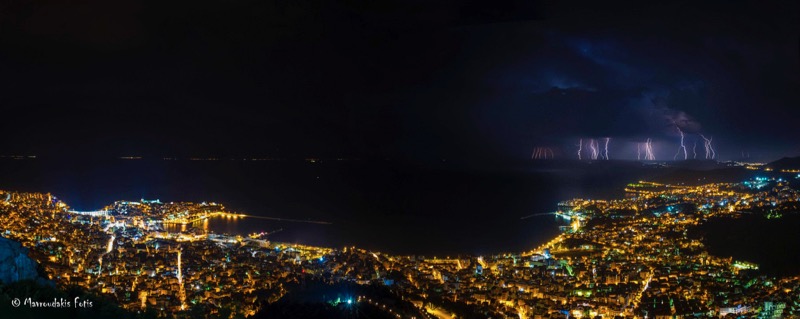
Fotis Mavroudakis – Lightning storm over the city
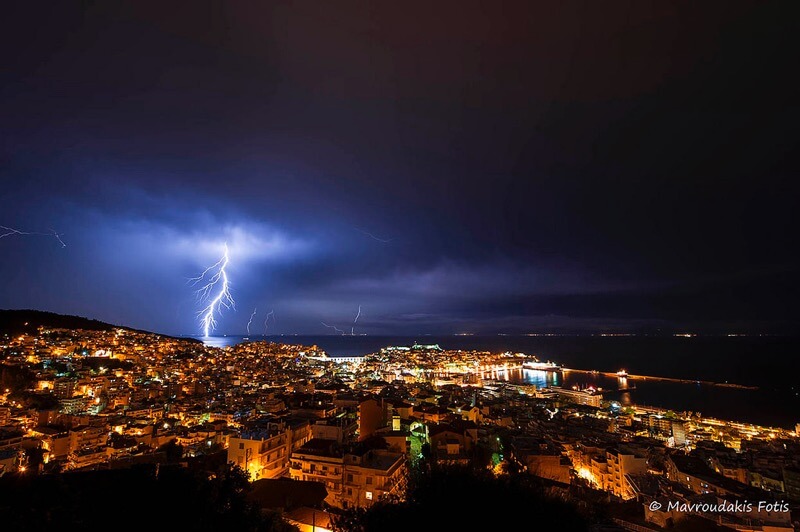
Blizzards and Ice
Compared to tornadoes and lightning, blizzards may seem less threatening. They’re more predictable and easier to escape. As long as you dress warmly and stay close to a heated, sturdy building like your home, you can shoot a blizzard without fearing for your life. For suggestions on what to wear and pack along, check out our post about cold weather gear.
The main challenge isn’t staying alive; it’s the photography. Shooting snow in poor lighting can be immensely difficult, especially when that snow is rushing down. You can have an awesome idea in your head, yet struggle to successfully execute it. To improve your chances of getting a great shot, read these helpful tips for shooting in the snow.
If you’re getting frustrated with the falling snow, try waiting until the snow has settled. If you’re one of the first to head out after a blizzard, you can get amazing shots of the smooth, pristine snow covering everything.
This strategy is also effective with ice storms. Since ice storms resemble rainstorms, only colder, you’d be better off waiting until the storm is over. Then, you’ll find a world totally transformed by ice.
Desiree_Elaine – Front Yard Postcard

Gerardo “Tito” Paez – Tormenta de Nieve

Benjamin Chase – The Long Walk

Fotis Mavroudakis – Snow covered city
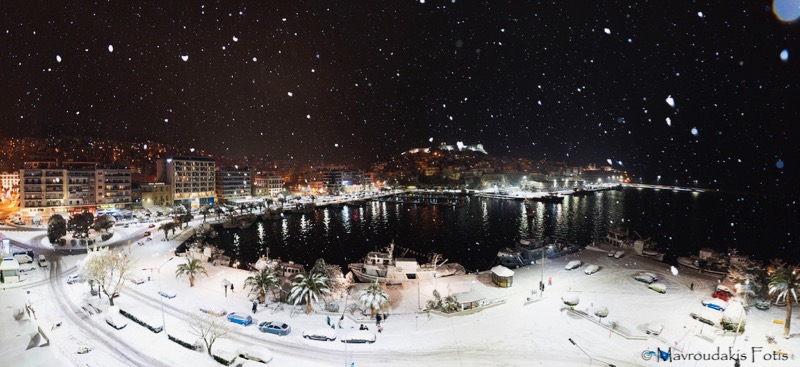
Sea Storms
Unless you’re riding on a large sea vessel like a cargo ship, the main way to safely photograph a sea storm is from the coastline. From this vantage point, you can capture the incredible waves without any seasickness or threat of drowning.
That is if you’re standing far enough away. If you’re standing close to the waves, you should definitely wear a life vest. A crazy big wave or gust of wind could knock you down and sweep you into the ocean. Keep this danger in mind when you scope out a location.
Besides standing at a distance, you can protect yourself by getting to know the tide tables, wind direction/speed, and wave behavior. This information will help you choose a safe spot, especially if you observe the location for a while before setting up.
In addition to safety considerations, try to shoot with the wind at your back or side rather than your face. Otherwise, the wind might blow ocean spray against your lens. Then, you’d be constantly cleaning your lens instead of taking pictures.
{Flixelpix} David – Watching the Sea Storm
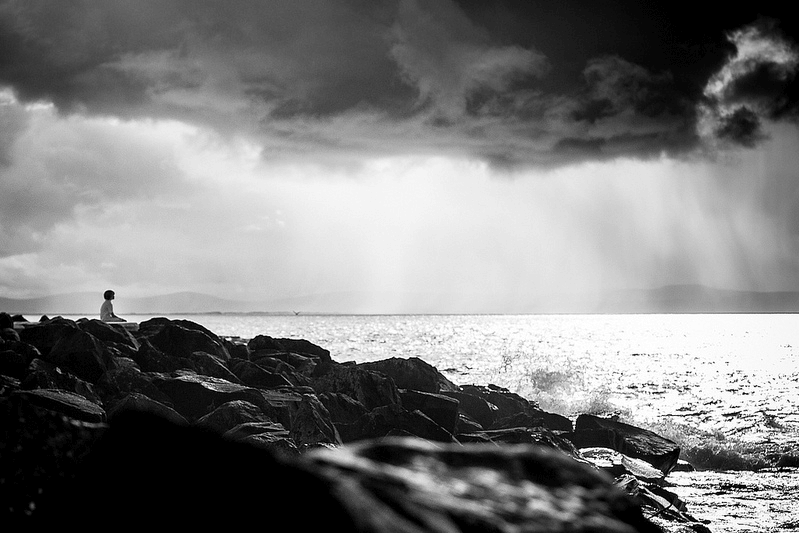
Karl McCarthy – The Power of Nature

Rainbows
If you want to experience the storm but not the danger, rainbows are a great subject to chase after. They often appear as the storm is approaching, so you can snap a picture, then leave before the storm hits.
They’re also lovely subjects that are relatively easy to photograph. All you need is a polarizing filter and a composition that emphasizes the rainbow’s beauty. Specifically, pay attention to the background and the rainbow’s endpoints. These two parts of the composition are critical.
You want a background that brings out the rainbow’s color. A rainbow can look faded or bright, simply depending on the background. Dark, shapeless backgrounds, such as storm clouds, are ideal.
As for the endpoints, position yourself so that the rainbow hits the ground/horizon in an interesting place. For example, the rainbow might end over a city or in the darkest part of the storm. This way, when your viewers’ eyes follow the rainbow to its end, they won’t be disappointed by what they see.
Sherri Yezbick-Taylor – Rainbow Over Lake Huron

All of the above photos were selected from our amazing community on Flickr. Got a great photo of extreme weather? Share it with us!
